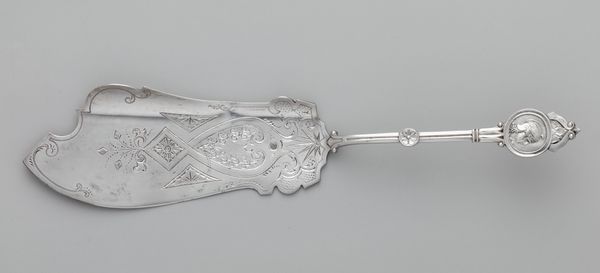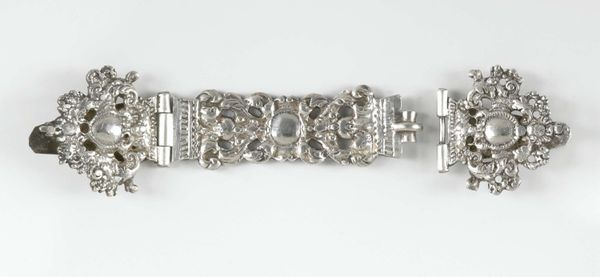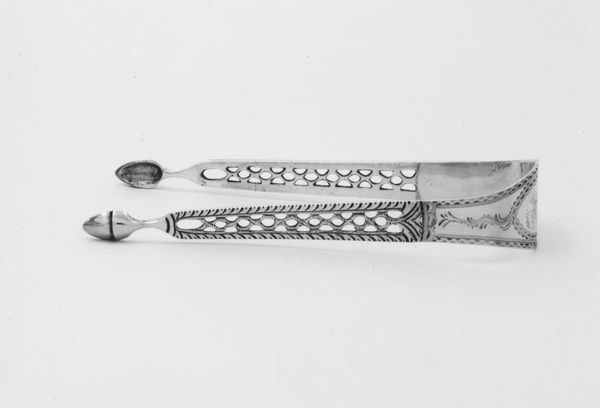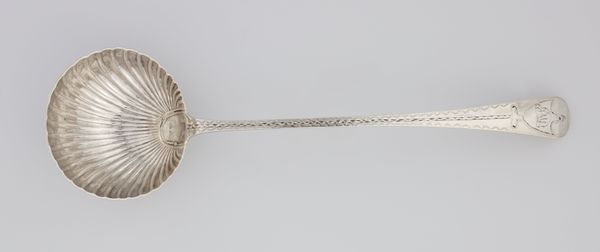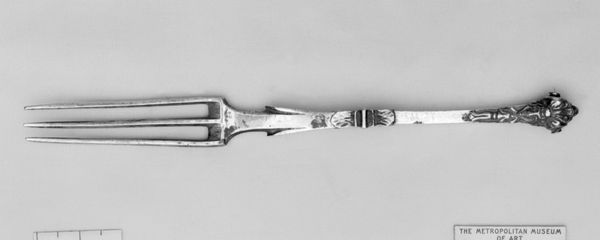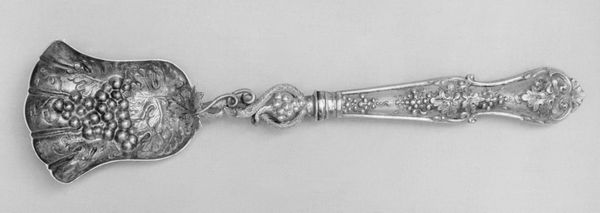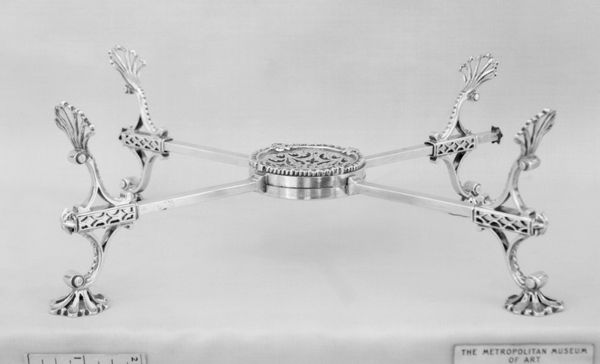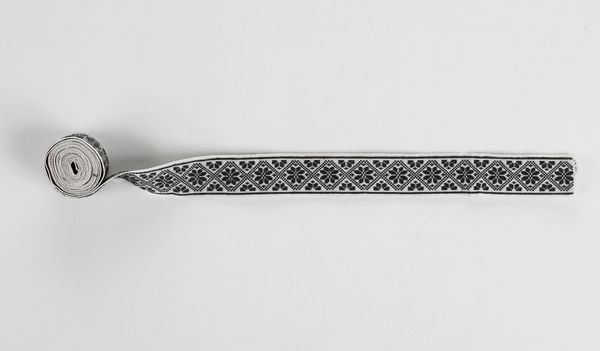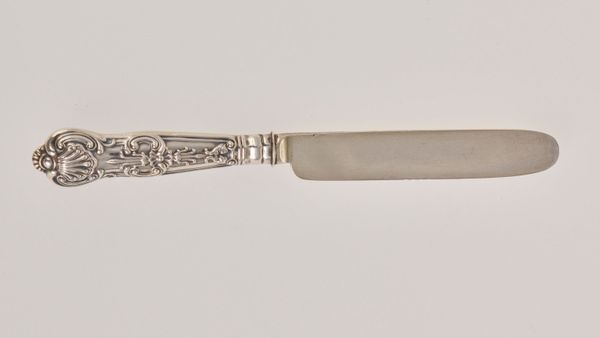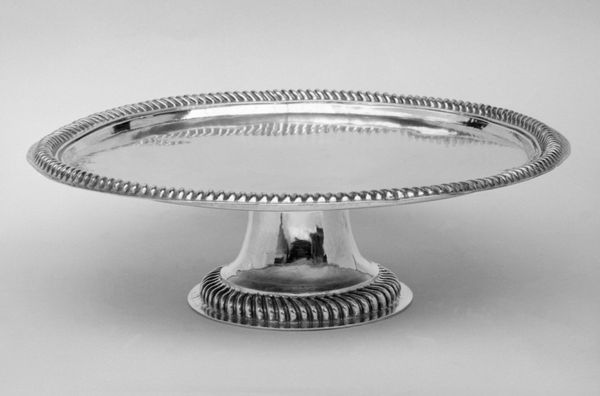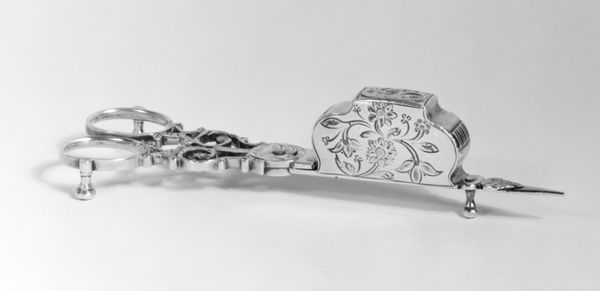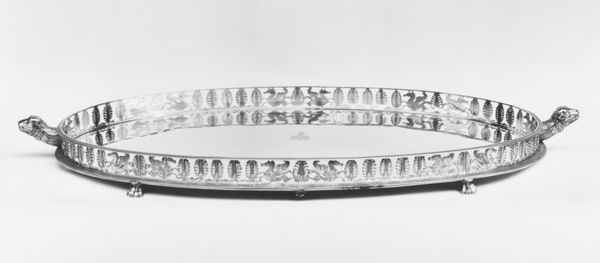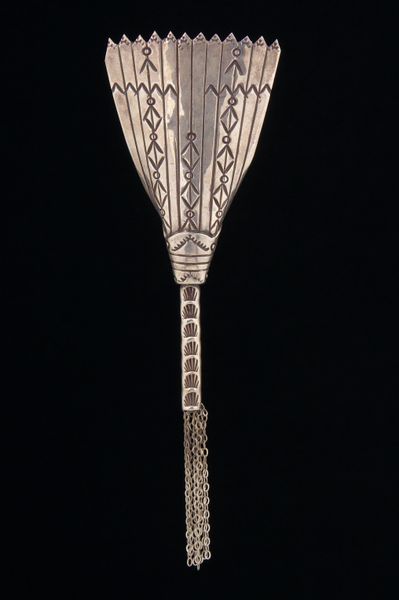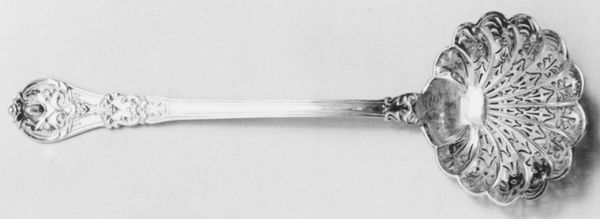
Dimensions: Length: 11 1/4 in. (28.6 cm)
Copyright: Public Domain
Curator: This exquisitely crafted object is a silver cake server made between 1780 and 1781 by William Plummer, currently held at the Metropolitan Museum of Art. Editor: My first thought? That filigree work is just stunning! The intricate patterns immediately draw your eye in. Curator: Indeed, the baroque elements are quite evident in the decorative program. The undulating lines and floral motifs suggest an elegance characteristic of the period. The semiotic weight of such designs points to a culture obsessed with refinement. Editor: Absolutely, but beyond mere surface aesthetics, I wonder about the silversmithing process. Think of the hours of labor and skill it took to shape this from raw silver. The decorative-art designation underscores its place within a wider culture of making and the value of artisan craft. How was the silver mined? What were Plummer's working conditions? Those details color our understanding of the object. Curator: Those social elements are worth pondering. Though if we confine ourselves strictly to its form, one can argue that the perforations themselves are formally ingenious—void becoming ornament, figure, ground, all working harmoniously to define and lighten the object’s structure. Editor: Agreed, it transcends pure utility to become something expressive and beautiful, indicative of baroque excess, really, as a serving object is enhanced with sculptural details that signal leisure and status. Curator: Precisely! A true nexus where form meets symbolic function, this cake server serves as a fine case study for decoding period aesthetics. Editor: So, we begin with an object and end questioning its history and craft. It proves art can be as delicious as cake, inviting consideration and questioning!
Comments
No comments
Be the first to comment and join the conversation on the ultimate creative platform.
